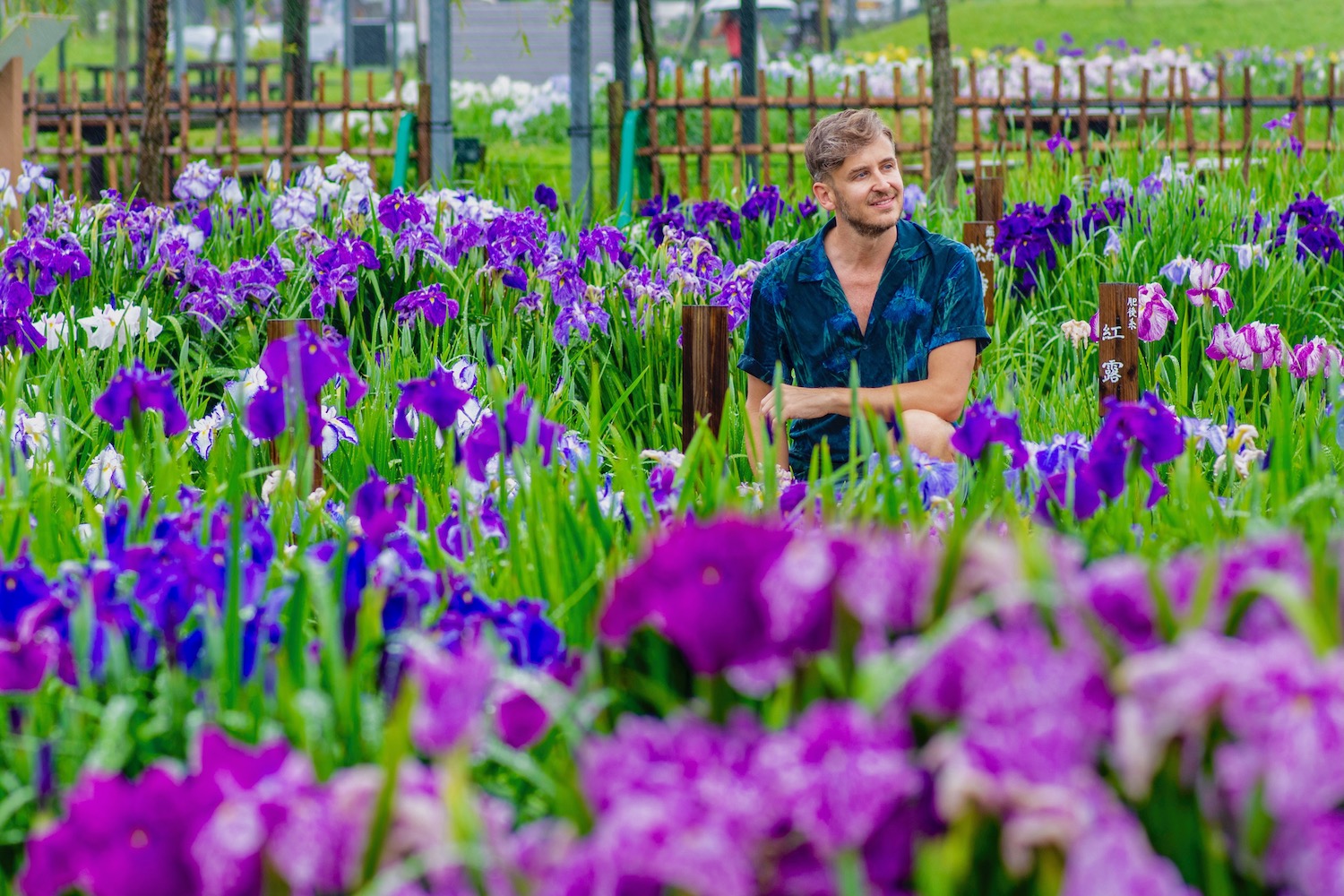The trip I’m on had a name—irises and blue tears—before I was even sure I would take it. Which, paradoxically (naming the trip this is) gave me no choice but to execute it as planned, even if the case for doing so inherent in the name was weak.
As might not seem surprising, I had two primary sources of inspiration for this trip: The ayame (Japanese irises) of Suigo Sawara Iris Park near Narita Airport in Japan’s Chiba prefecture; and the so-called “blue tears” (which are just bioluminescence) of Beigan island, in Taiwan’s offshore Matsu archipelago.
Surely, I remember scolding myself as I was putting together the preliminary scaffolding for my journey, these two things are not enough to base a trip on.
And so, as one does, I added more—a night at Zao Onsen in Yamagata prefecture Japan; a day trip from Taipei (where I’d decided to spend two nights) to rural Yunlin County.
Still, as February faded into March (and, especially as my much more precedented biennial sakura trip approached), I felt blasé about the prospect of a follow up less than two months later.
The motivation I needed actually came toward the end of my cherry blossom chase, when I realized that there was a problem with the final destination I’d selected.
Sado Island, which I’d only planned to re-visit in order to see one of its famous Noh performances (which were canceled, ostensibly due to covid, when I last went there in 2021), did not have any shows scheduled for the dates I’d be there.
I canceled my would-be April epilogue unceremoniously; the owner of the inn where I planned to stay didn’t actually receive my messages and, as I flew back over the Pacific two days early, sent out of a number of increasingly frantic smoke signals to make sure I wasn’t dead. I still feel terrible about this.
But as it turned out, this particular puzzle piece was just what I needed to see the full picture of the irises and the blue tears.
(And, perhaps, the lavender, though I’m getting ahead of myself.)
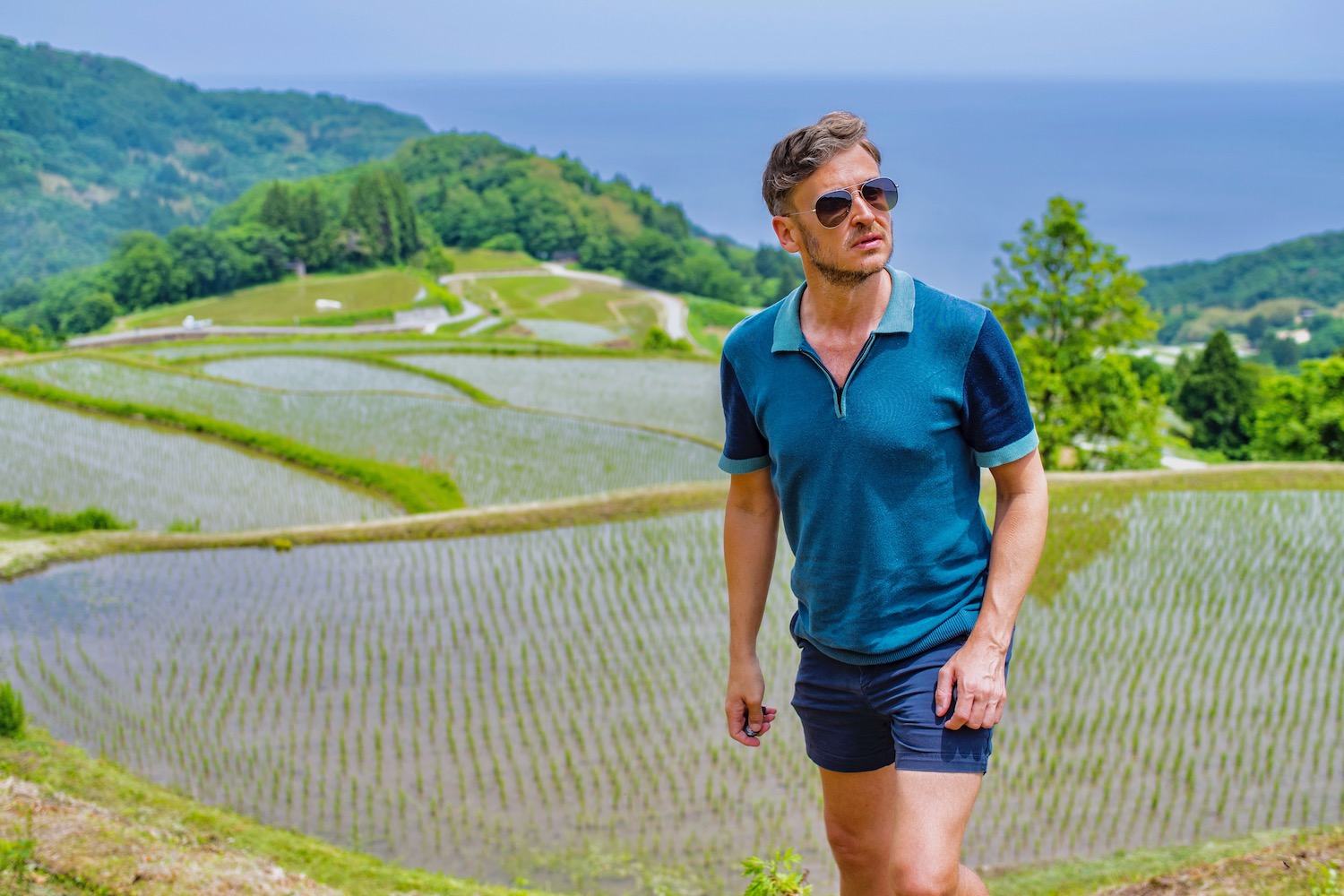
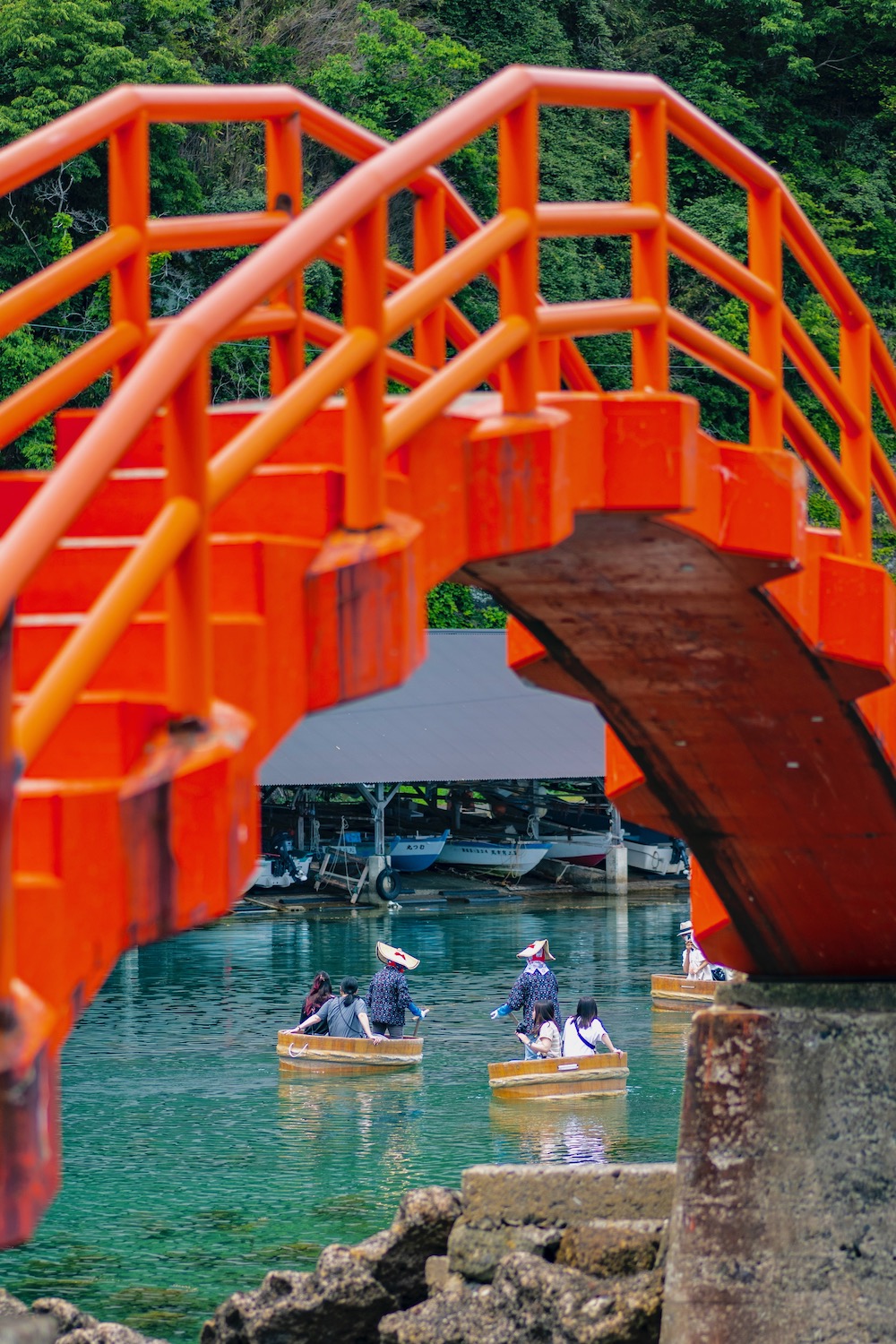

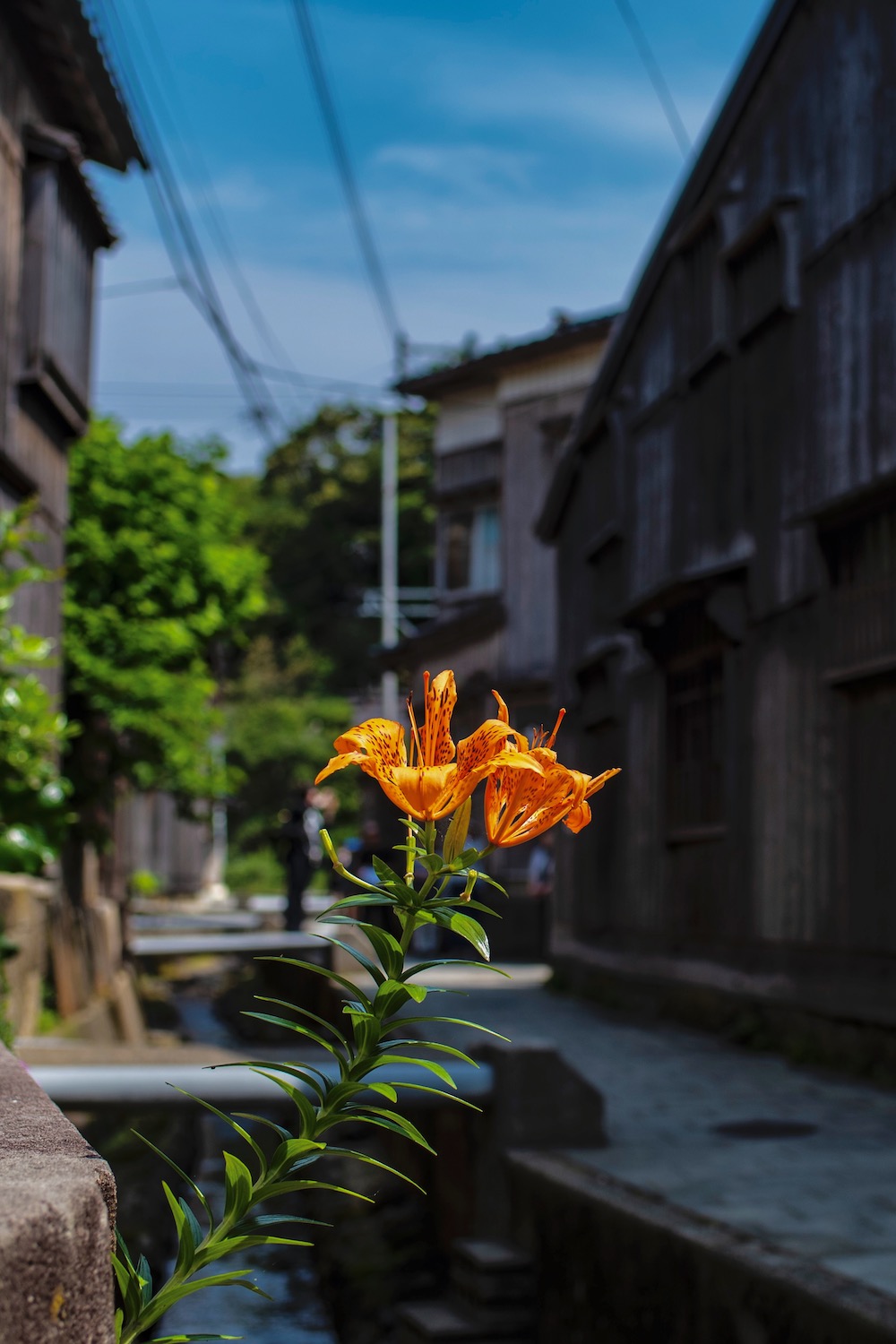
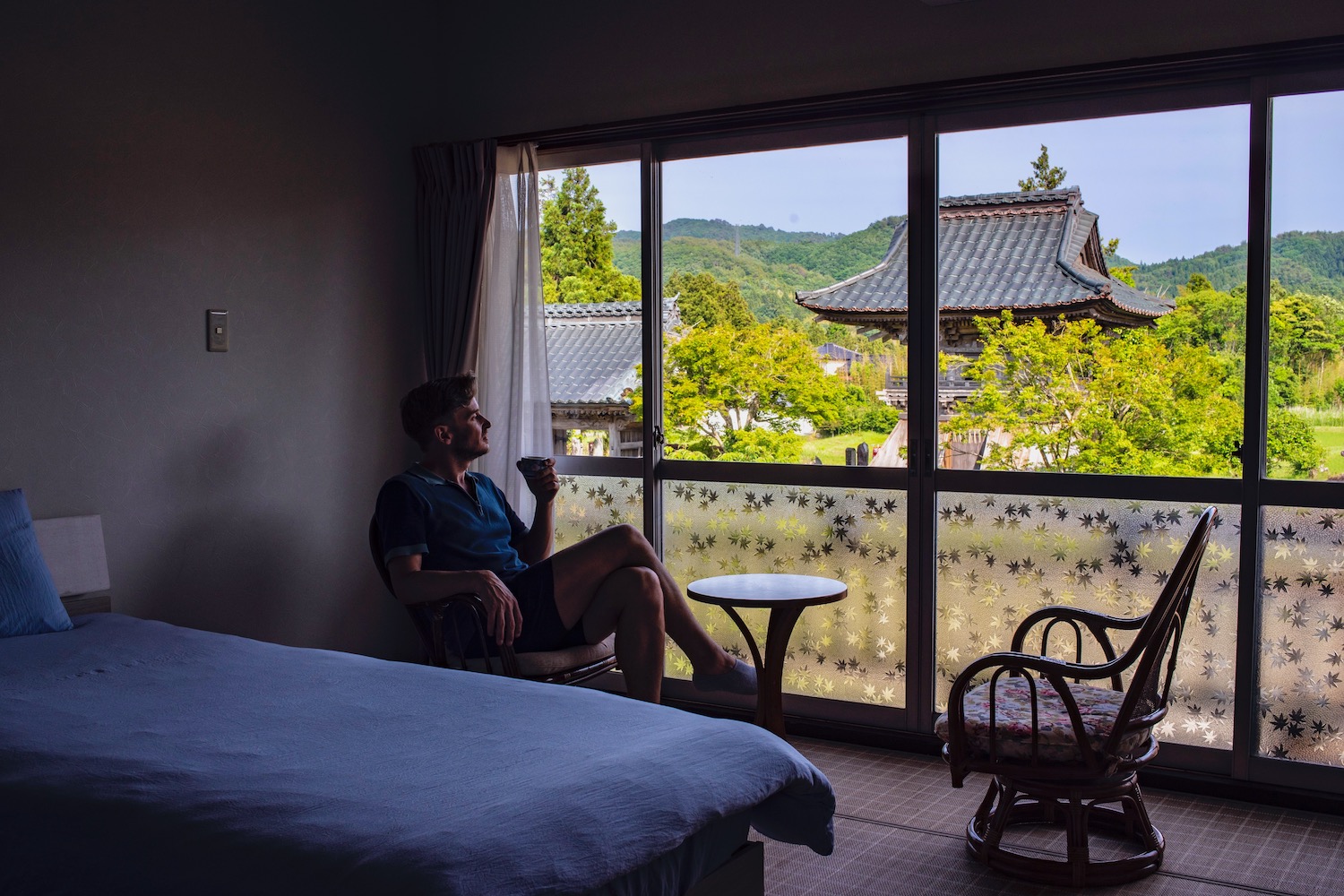
15 years ago this November on my very first sponsored trip, I crossed paths with a travel blogger who was ostensibly well-known, but whom I’d never heard of. Based on sheer numbers, in fact, he was probably the biggest in the world at that time (and no, I’m not talking about Nomadic Matt—this guy was bigger).
He was also a complete fucking asshole, and threatened to ruin the experience (we were in Thailand, and about to experience what was then my first Loy Krathong festival) before I even went to bed the first night.
“There had better be five-star accommodation throughout this trip,” he barked, apparently unsatisfied by the very nice Ratchadamri hotel where we’d been put up before heading down to the Chao Phraya River. “Otherwise, I’ll just fly to Hawaii to stay with my rich friend—I need to work on my book anyway.”
No one talks about this person’s blog anymore (well, I mean to the extent that they ever did—I never heard a single person mention it in real life), and if I’m honest I quite literally never think of him.
But a few days before I departed, walking along a quiet Dallas-area trail with my husband (who resides part time in the area, on account of his job with American Airlines), my emotional memory of the bratty blogger crept in.
In the form of advice another creator on the trip had given me. “Whatever you do,” he said, “don’t become a lost soul like that guy. Don’t allow yourself to drift too far from reality.”
Here I was, in a moment that was basically perfect, a fuchsia sunset rising about a gentle creek with mesquite trees on either side of it, planes taking off and landing even more reliably than birds. And I was about to walk away from it for some purple flowers and a plankton tantrum.
But walk away from it I did; and I chastised myself about this decision on the flight from Los Angeles to Tokyo the next day, during which I proceeded to do a stream-of-consciousness mind dump, to try and come to terms with the most first-world of problems.
I bring all this up, to be sure, not to use anyone reading this as my therapist (or even a sounding board), but to set the scene: When I finally began making my way back to Sado Island, after having canceled in April and not having been there since 2021, I had reason to resist the journey.
Well, an internal reason, anyway. Externally, there was not a cloud in the sky as the jetfoil departed Niigata’s Bandai Port, the conductor announcing that we were quite literally “flying” above the surface of the sea, on account of the way the technology works.
Arriving back on the island (even if I remembered so little about my pandemic-era trip there that it might as well have been my first time), I wasn’t sure what to think.
Part of this was my own fault. I’d chosen as my first destination some rice terraces I’d missed in 2021, which were both further (and up a much more inhospitable road) than they’d seemed when I added them to my itinerary, and more lackluster than I expected, at least during the daytime.
Certainly, the murder hornets buzzing beneath the bench of the viewing deck implored me to get on my way.
My perception improved drastically, on the other hand, when I arrived at Ogi Port. I’d been here back in covid times; there had been no taraibune at that time, ostensibly コロナから.
In the present day the tubs were spinning and swirling, tying together the generally pleasant scene of Yajima island and the vermillion bridge leading to it.
To some extent, of course, these (and all the other places I visited were appetizers): I was here to watch Noh—which, even after checking into my shukubo, chatting with the owner and sitting down for a dinner of yellowtail katsu, still wouldn’t start for more than two hours.
Two hours during which I’d not only need to find a parking place relatively close to Shiizaki Suwa Shrine, but also to avoid succumbing to jet lag.
This, strangely, made me think again about Loy Krathong in Bangkok back in 2010: The only silver lining of what’s-his-name’s incessant bitching and moaning had been the fact that it kept me awake, when I’d wanted nothing more than to fall asleep, the main event be damned.
On Sado Island in 2025, I had no such luck: I kept myself conscious by wandering around the shrine grounds until about an hour before showtime, and then twiddling my thumbs alongside all the other photographers as we waited.
Somehow, by the time they lit the fire (this was takagi Noh) and the guttural chanting started blaring over the sound system, I hadn’t closed my eyes for any longer than it took to blink.
As the spectacle proceeded (in a fashion that was wonderfully slow, given the shutter speed I was shooting at), I thought back to a more recent traveler encounter, this person the polar opposite of the blowhard blogger.
I’d met Terry (whose name I would’ve anonymized had I not forgotten it, so it’s just as well that I did) on the domestic leg of my flight to Japan: She was getting off the plane in L.A.
“But I’m only staying one day,” she was quickly to clarify, explaining that she’d been riding up the coast by train—first to San Francisco; then to Portland and Seattle; and finally all the way to Vancouver. There, she’d change to a cruise ship, which would take her to Alaska.
“The first time,” I remember her smile, and the excitement in her eyes as she got the words out. “And probably the only time, given my age.”
She was anything but a lost soul: Hers was a soul that was finding itself again.

“Japanese people don’t understand Noh either,” the woman who works at my shukubo in Sado reassured me (in Japanese), as I sat down for breakfast with her and the temple’s priest after a prayer service.
I needed some affirmation. Though I could technically read everything in the pamphlet, on account of unfamiliar kanji being transcribed using furigana, the pace was nearly too fast for me to keep up; I missed about 90% of the meaning.
It was a humbling experience—though thankfully, because my hosts were gracious, not a humiliating one.
We were dining on a rice porridge steeped in tea—a variation on o-chazuke, I suppose—which was almost pink in color, I presume due to tannins. The toppings were pickled ume, daikon and takenoko, the latter of which I’d seen the previous day when they were freshly harvested and sitting in a wheelbarrow.
After briefly chatting (the priest knew the Cardinals, but had never been to America; the young woman had, but only to L.A .and Vegas), they gently recommended that I tack two temples onto my planned sightseeing.
They were Hase-dera and Seisui-ji (the name of the which represented an alternate reading of the characters that represent Kiyomizu-dera). “Trust me,” the woman said in Japanese, with a smile.
To be sure, neither of the temples had anything in common with their more famous cousins in Kamakura and Kyoto, which shared their names.
Instead of hydrangeas, the grounds of Hase-dera (accessible only via a steep staircase) were green, except for some leftover azalea blossoms in a fading neon salmon color. Absolutely massive cedar trees shaded me as I walked—not that I needed the shade, on account of the morning haze.
As Seisui-ji meanwhile, a long tunnel of evergreens framed the entrance gate, in a way that I suppose you could compare to nature’s version of the Machiya lining Sanenzaka in Kyoto.
However, there was not a single other human being present, though one had created a sign to warn of a large bee’s nest at the base of one of the trees.
Keep away, it said (in English, to my surprise). These bees will attack.
If I’m honest, I could’ve ended the day then and been satisfied: Nothing inspires me like visiting places I didn’t know existed until moments before I lay eyes upon them.
Instead, I made my way toward my first planned destination (Onogame, a towering mountain at the far northwestern end of the island, over an hour from where I was), but with a bit of extra spring in my step.
I’d been here back in 2021: It’s actually the place that inspired me to visit Sado in the first place. It had featured prominently in 2019 film “Earthquake Bird”; prior to seeing it, I hadn’t so much as heard of Sado-ga-shima.
I hadn’t summited back then, however, nor had the orange lilies been in full bloom. As I passed under the torii to the trail in the present day, a teenager tried to sell me lily seeds, which reminded me that one of the main characters in the movie had been named Lily; I doubted that was a coincidence.
Steps from the top, I encountered another yong person, this one carrying a butterfly net, an accessory I never ventured far without when I was his age. I doubted that was a coincidence either.
The afternoon was hazy; I spent it trying mostly to stay in motion, needing to push through what remained of my jet lag.
After a mostly pointless excursion up to Hakuundai Observation Deck (the haze was too thick to see the island below) and the Sado Kinzan Gold Mine (which had doubled its price since 2021—thanks UNESCO!), I drove north and south along the island’s west coast, searching for the perfect sunset spot.
Some seagulls in a rice paddy with views of the sea ended up tipping me off. I had stopped to photograph them at rest over the flooded fields, but they took flight in unison, which signaled to me that this was the spot.
They were gone, of course, by the time the sun finally sank into the sea behind a layer of haze; it took over 10 minutes after that for the clouds on the horizon to glow pink. I wondered where they’d gone, and whether birds were even aware of what a sunset is.
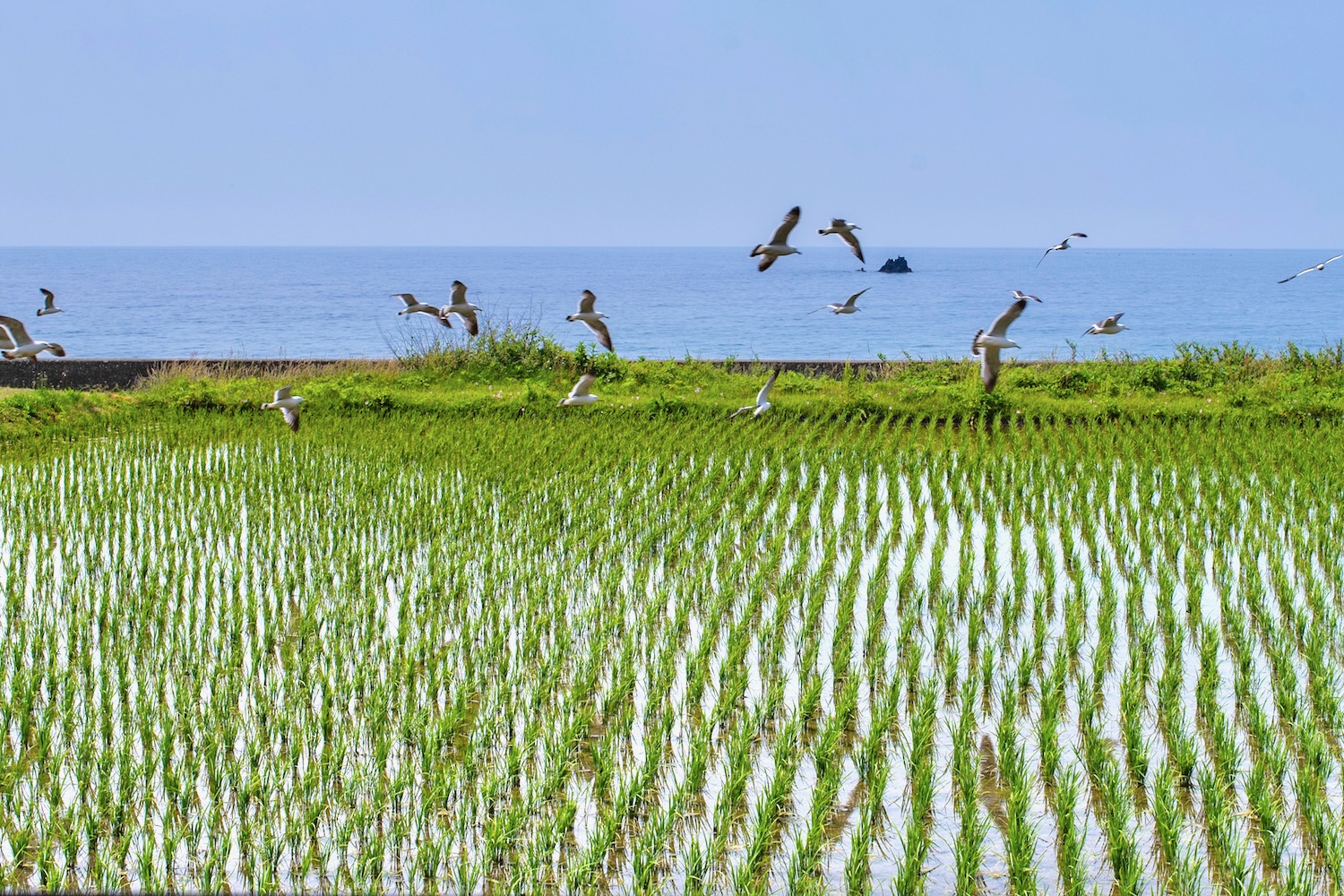
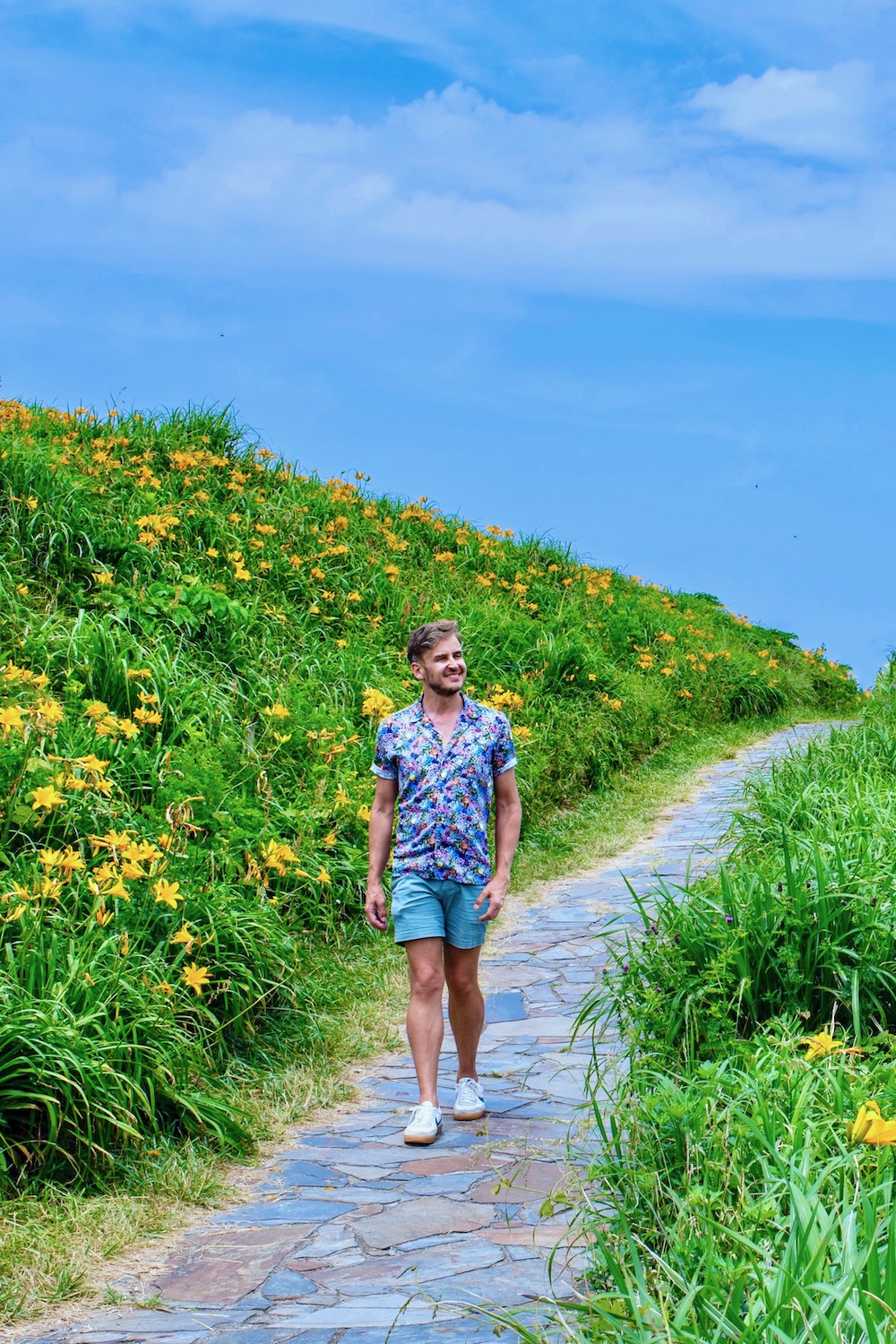
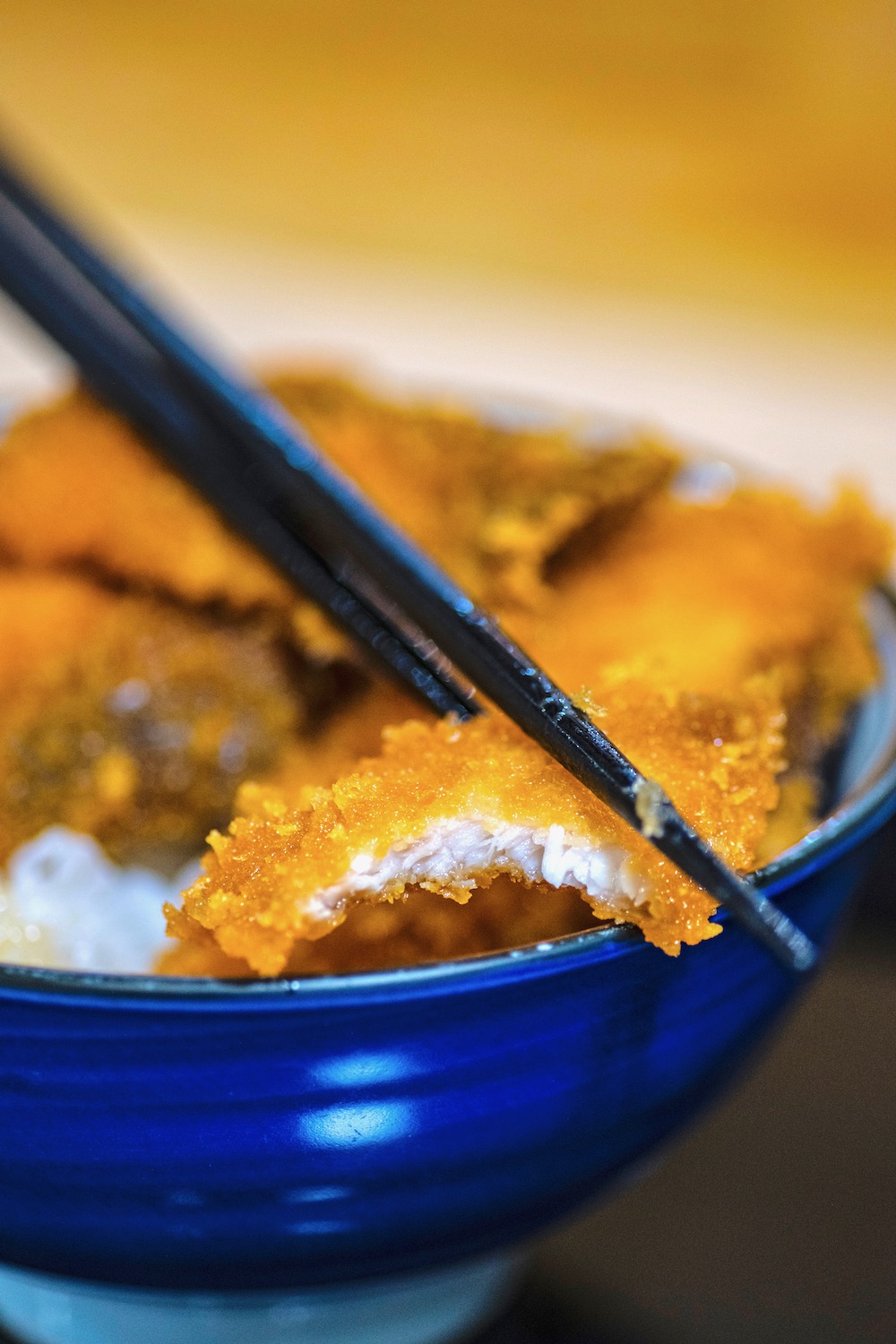
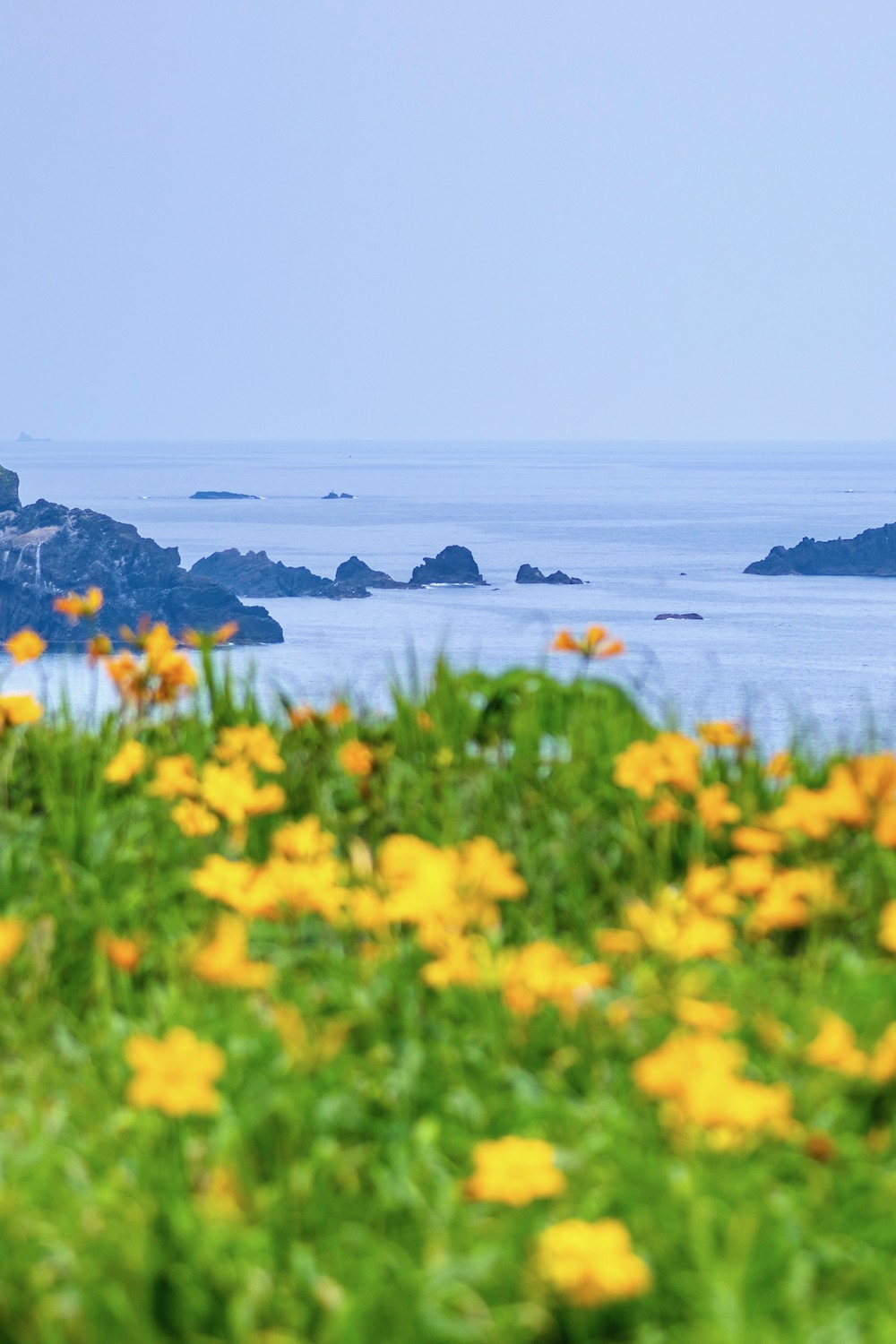

The next sunrise ended up glowing a similar color to sunset the evening before; I also situated myself near a flooded rice paddy to take the spectacle in.
Walking back to the shukubo, I noticed a caterpillar about halfway across the road, and in no seeming rush to reach the safety of the grass. It seemed unlikely any cars would come, let alone other people besides me.
“We see the sunrise together,” the priest said, in English, after we ran through the prayer (the same one as the day before) just after I returned. “This,” he continued (but in Japanese), “is the meaning I want you to take with you as you go.”
Sunrise, it turned out, would remain the highlight of my day nearly until sunset.
When I added Sado to my trip, I needed something to place between it and the irises that inspired a return to Japan on this occasion in the first place.
I’d wanted to return to two onsen in Yamagata prefecture—Zao and Ginzan—during the summer; this seemed like it was probably close enough for me to achieve the aims I had in each without much of a problem.
After a disappointing stop at Okama Crater (which I found completely covered in fog after a three-hour drive from Niigata), I arrived in Zao Onsen feeling less than hopeful about what I’d experience there.
After all, if I couldn’t even manage to see a blue sky above the emerald caldera lake, what hope was there that the late-spring version of a famous winter wonderland would by anything worth writing home about?
In fact, the scene that awaited me was thrilling. Neither covered in the feet of snow that had entombed it six Februarys earlier, nor crawling in the tourists that had come to see “snow monsters,” Zao somehow felt exclusive in the green season.
This was true both as I dined alone on grilled sukiyaki (which solved me main problem with the dish—I hated boiled meat) in the last few minutes of daylight, but also the next morning at the Dairotenburo (large outdoor onsen).
Only one other person entered the male bath alongside me; he disobeyed the photography ban before I had a chance to do so.
He didn’t say anything to me—we were both naked, after all—but our gazes gave each other permission to break the rules. I’m guessing the staff figured what I’d been up to when I left after less than 20 minutes on-site.
My next stop was the town of Sagae, which is notable not only for being Japan’s largest producer of cherries, but in fact as one of the only places in the cherry blossom country whose flowers actually fruit.
Here, too, I felt a sense of exclusivity: I drove discreetly onto someone’s farm (hey, he wasn’t there to stop me) and took pictures beneath a branch dripping in ripe, red sakuranbo, snow-capped mountains behind me.
I wish I could tell you that my momentum only grew from there, that I sank my teeth into Ginzan Onsen’s watermelon (which happens to be my favorite temperate fruit, besides cherries) just moments after making the drive there.
But make the drive there I did not: It turned out that I actually was too early; summer was not, in fact, close enough for suica.
Two of the remaining four destinations I had on my list—Shimizu-en garden in Shibata City; the Northern Culture Museum just outside Niigata—were closed on Tuesdays. The third (Shirasagi Garden in Sanjo) was at least a week from being at its prime.
Only one or two irises are in bloom, its official website conceded pathetically, in its status update from the day before.
In another era of my life, I’d have been furious upon arriving at Shibata Castle (the fourth of four prospective destinations, but the only one I could actually visit) just as a torrential rainstorm was starting. Part of the reason I’d come back, after all, was because of how gloomy it had been four years prior.
Instead, the strong mineral smell of the deluge enchanted me as I watched it dimple the castle’s turbid moat between a billow of parakeet-green maples leaves, a couple opening their umbrellas in unison as if they’d choreographed the move.
“They see the rain together,” I thought back to the monk’s prescription 36 hours earlier. Like the caterpillar I hope will live to be a butterfly, they were in no rush to get to where it might actually be dry.
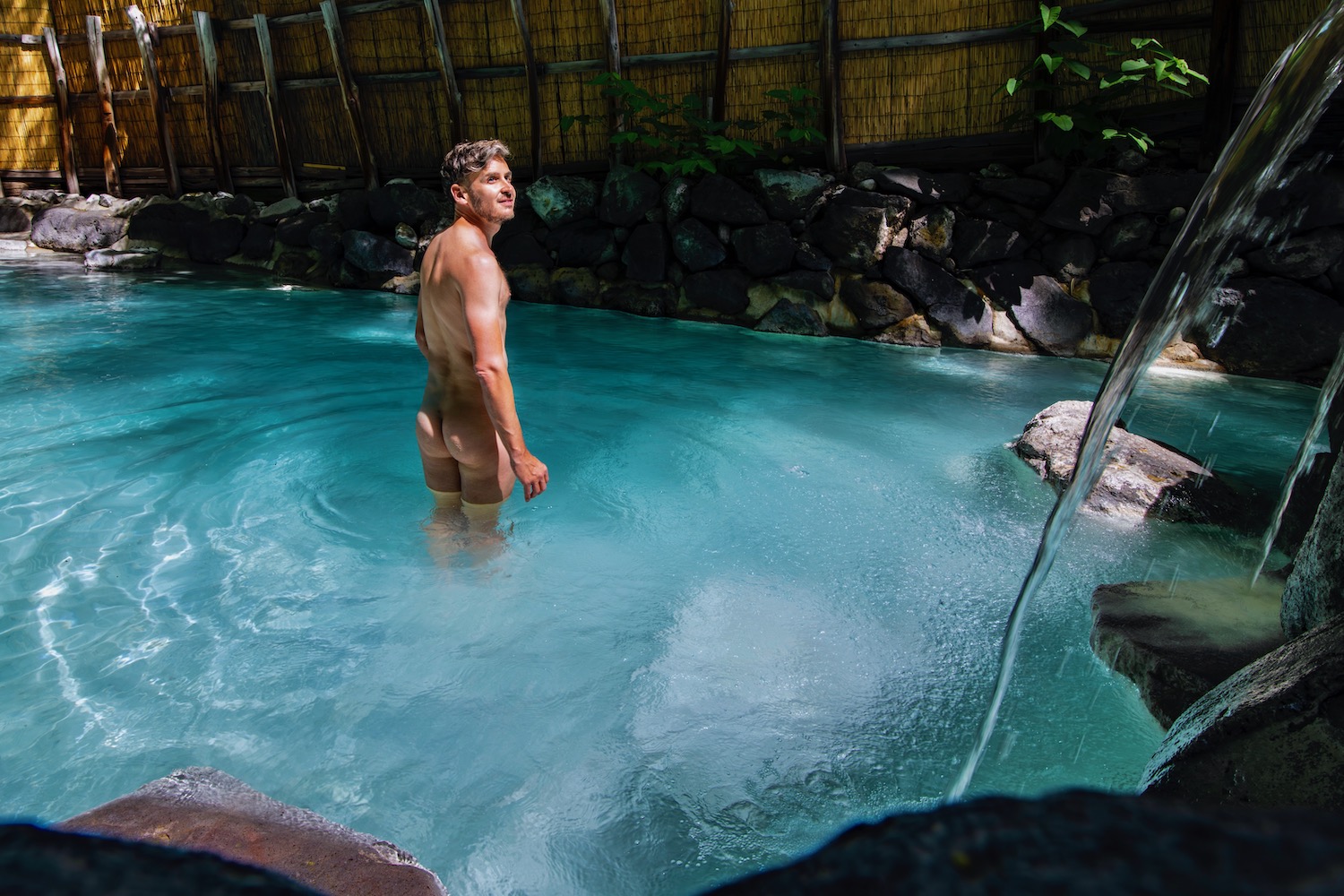
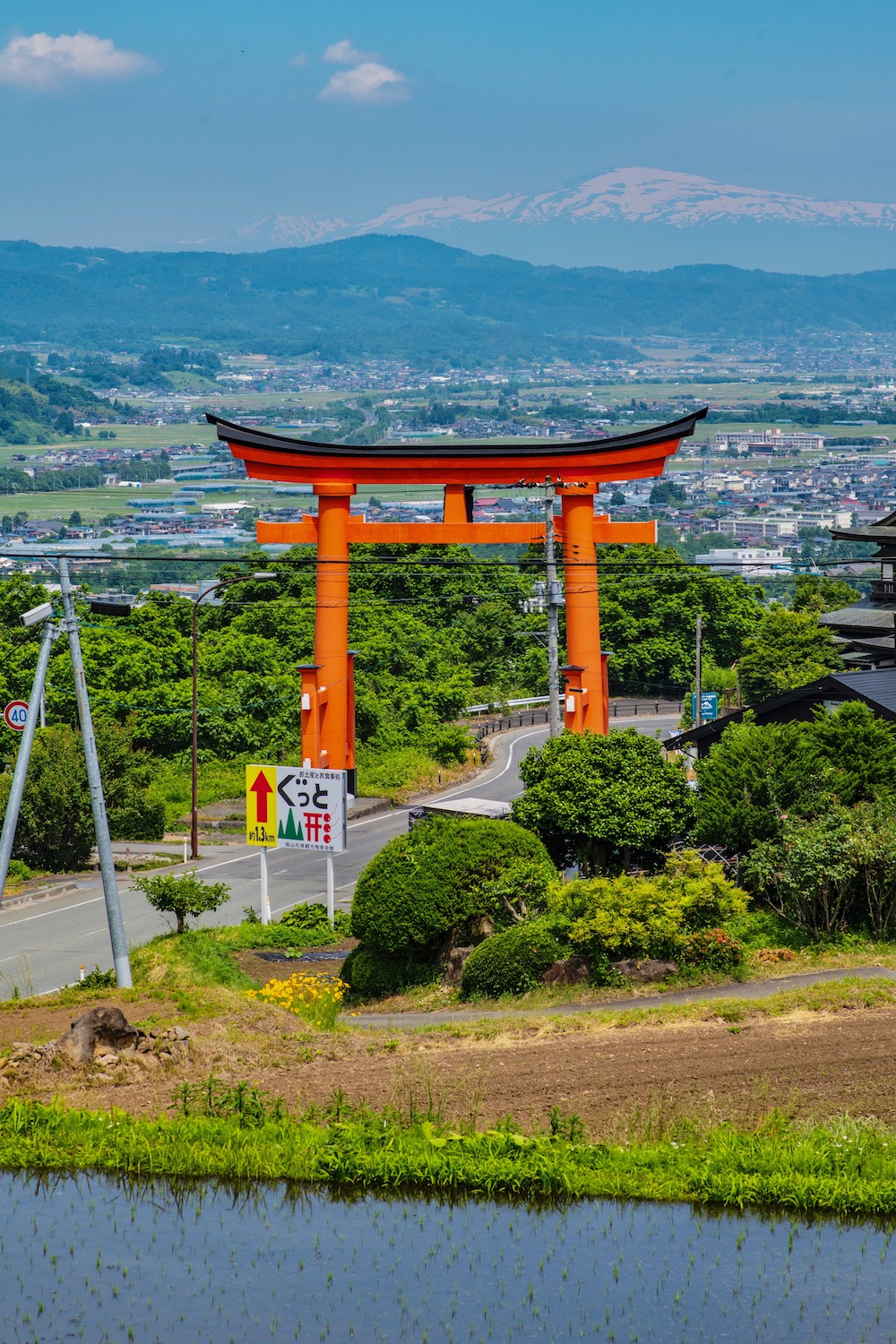
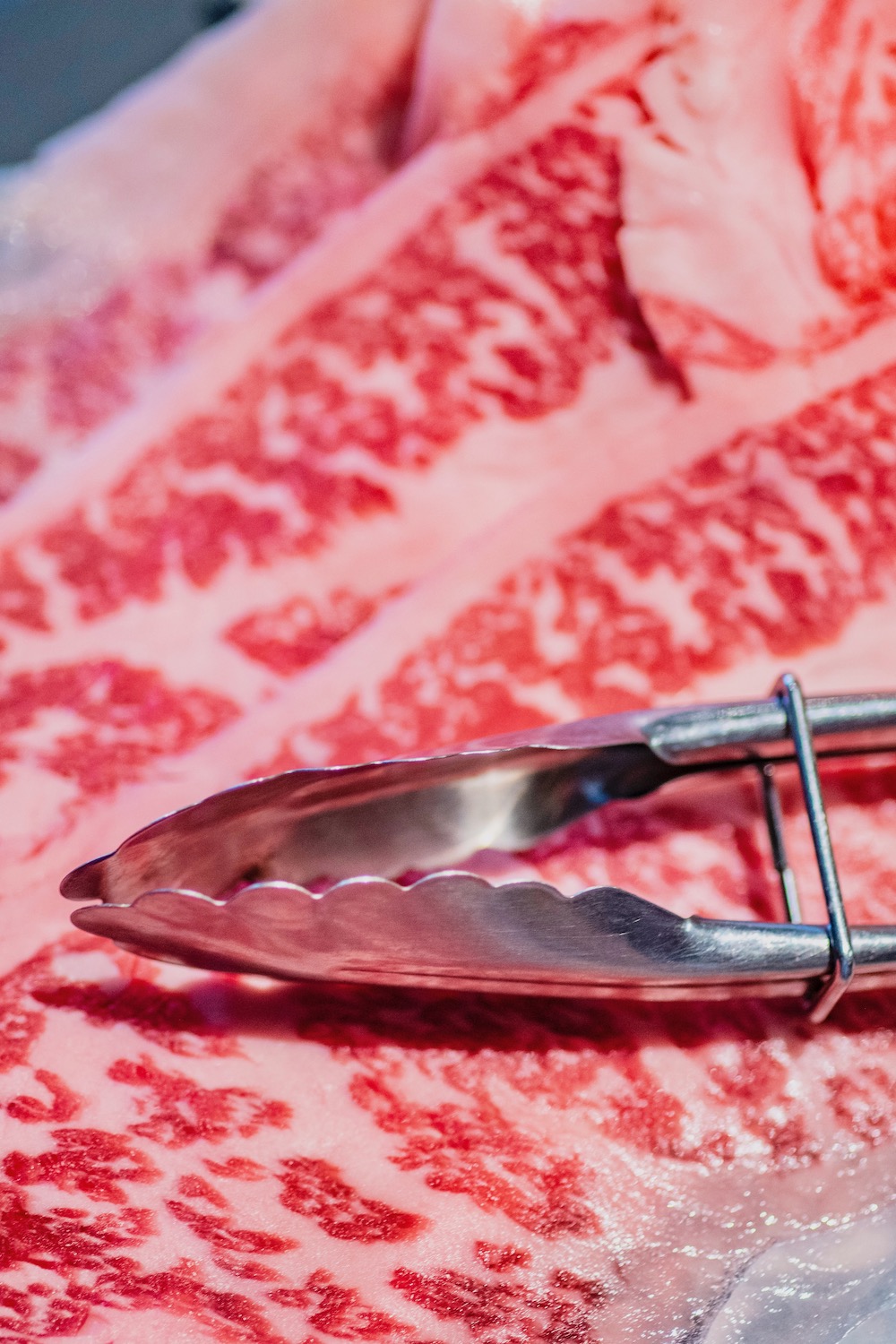

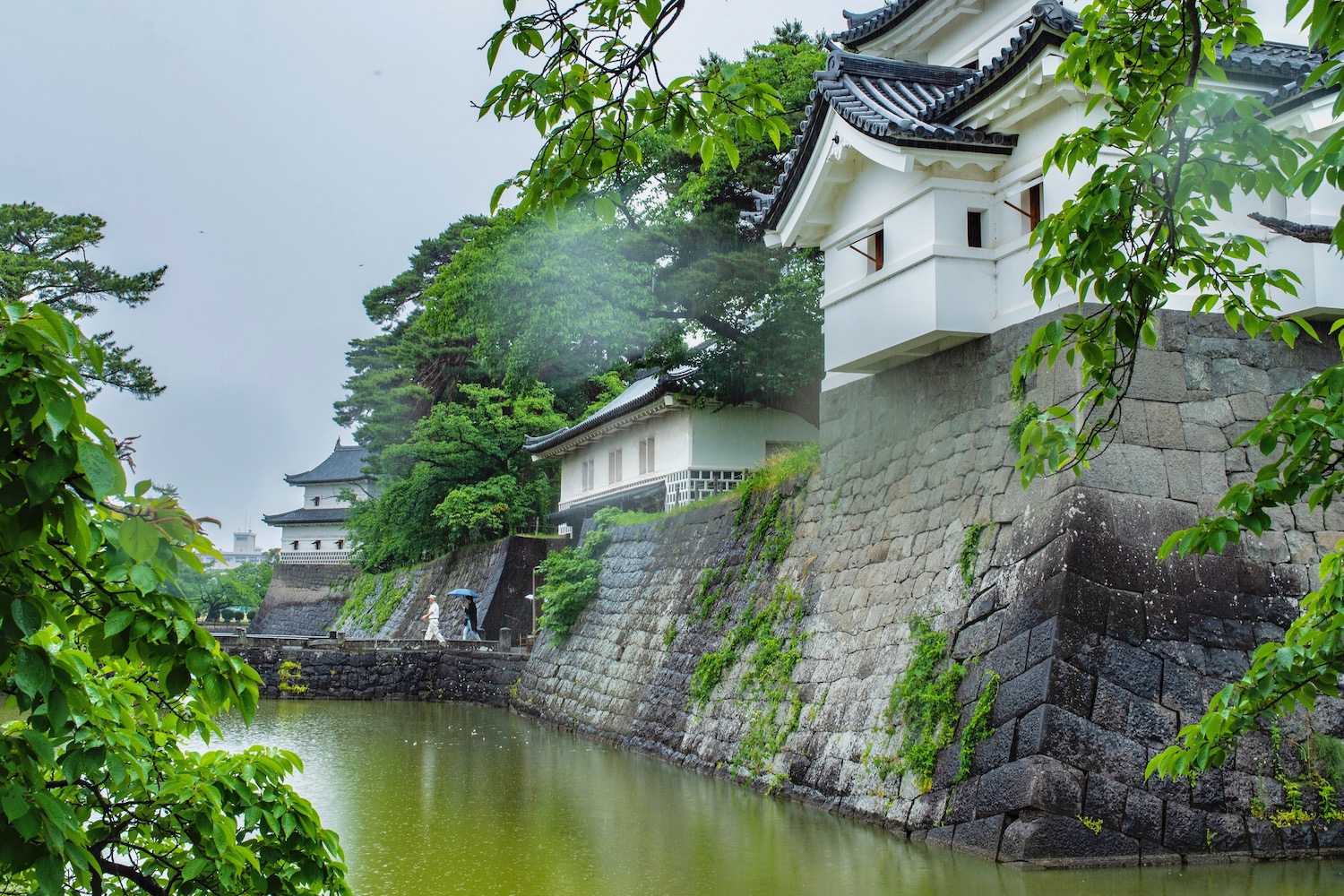
A couple weeks ago, I came across an article that suggested an apocalyptic event would occur in Japan on or about July 5, 2025.
The source? Ryo Tatsuki, also known as the Japanese Baba Vanga, who (among other tragedies) predicted the 2011 earthquakes and tsunami. Allegedly.
Now, I’m not here to say whether “Baba Manga” is correct; I also won’t be in Japan on July 5 to find out. However, as I arrived at the Suigo Sawara Iris Park near Narita Airport on June 11, I wondered whether she had been off by a few weeks.
Well, not initially. The rain seemed charming, appropriate even: A grey sky and drizzle suit the ayame aesthetic.
It wasn’t until I’d spent almost an hour exploring the park’s spacious grounds, which are said to be home to more than a million irises, that I wondered whether the downpour might bring about the end times.
It was the sort of rain that breaks umbrellas, that soaks you even when you’re standing under structures purpose-built to keep you dry. The dread tsuyu, or plum rain, which I had missed almost entirely when I visited Japan last year in June.
Importantly, it made it all but impossible to take pictures, except for during a few blessed moments here or there when the drops stopped for seconds (though never minutes).
As I struggled to document the scene without destroying my electronics (my hair was a lost cause), I remembered that these flooded-out flags (as my grandma always referred to them) were half of what had inspired me to take this trip in the first place.
The apocalypse might not be near, but 50% of the world I’d created for myself within the bounds of this itinerary would end the moment I passed through the exit gate.
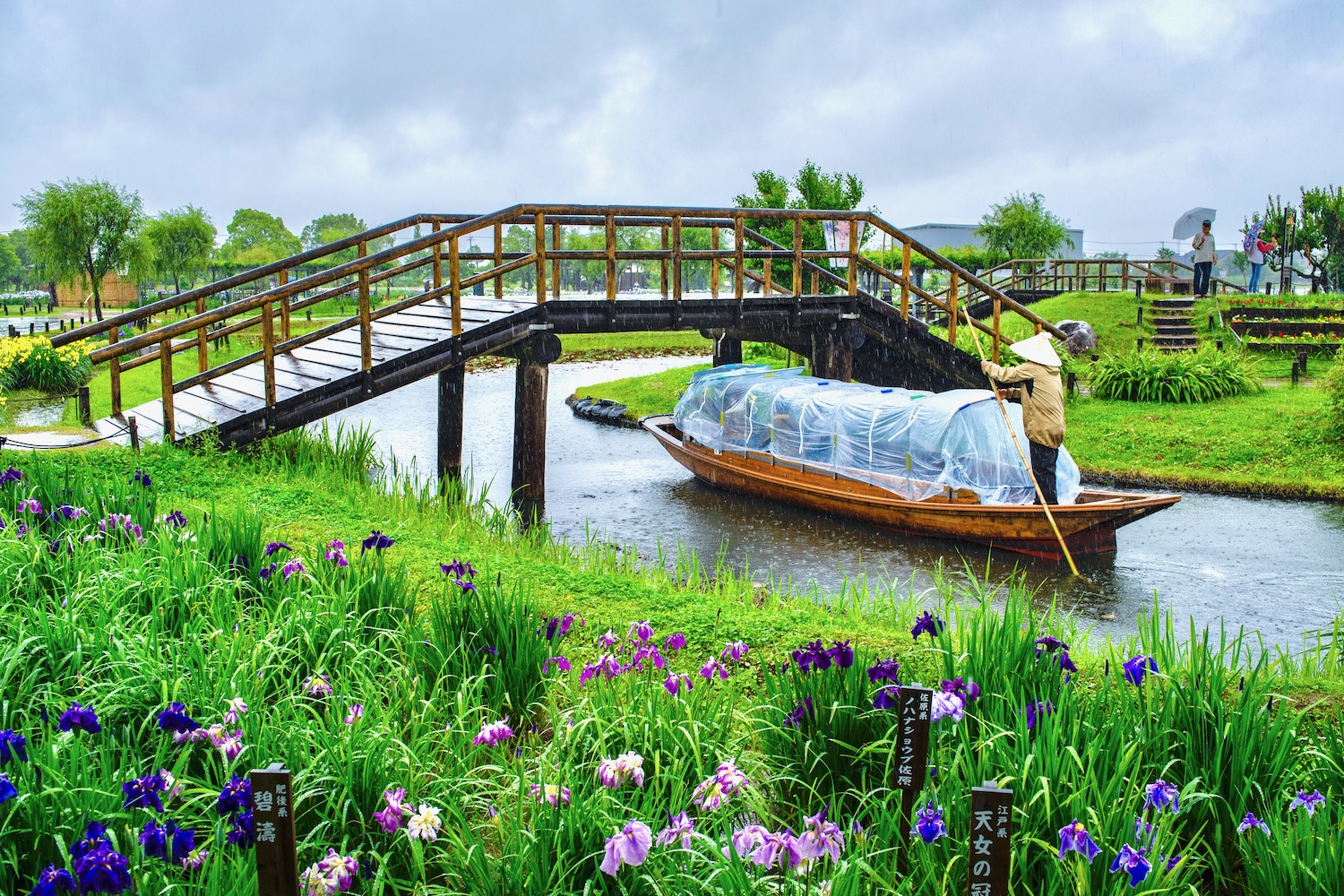
On a recent walk with my dad through some woods near his house, I had to do a double-take: We passed a row of honeysuckle bushes that smelled like oolong tea.
As my plane lifted off from Narita Airport, bumping and shaking as it blasted through the lingering clouds, I didn’t know whether seeing the blue tears of Beigan Island would come with strings attached, as visiting the iris park had. I didn’t even know if I’d be lucky enough to see them.
I did know that lavender wouldn’t be the third of three themes to define this particular foray overseas: I was simply too early for full bloom; this was not the right time.
I’d made the decision—to cancel my tentative trip to France—while jogging around the Tokyo Imperial Palace earlier that morning. And I finalized it shortly thereafter when, as luck would have it, award availability for a flight from Taipei back to the US came open, for precisely the day I needed to fly.
I’ll have to get back to you (in the form on an essay like this one, only published on Taiwan Starts Here) to let you know whether irises and blue tears had, in the end, been enough to build an entire trip around.
I’ve got a good feeling, though.



